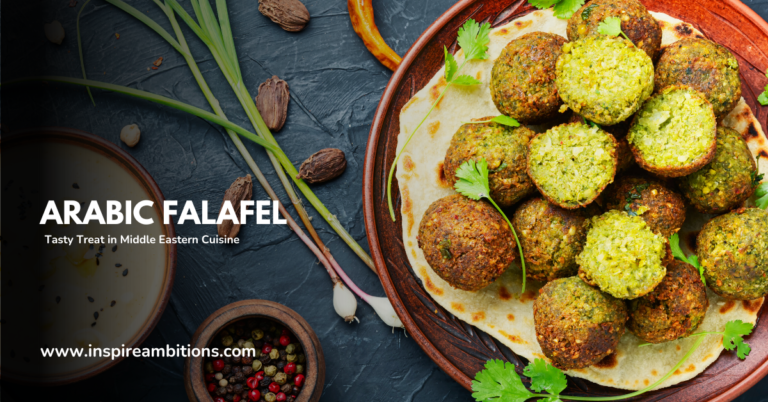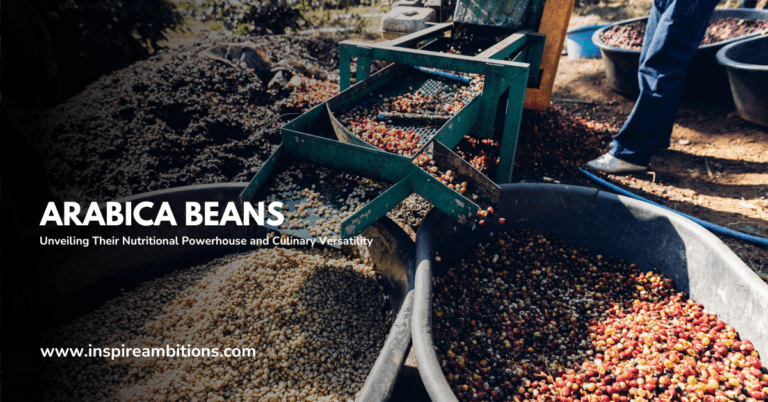Nozes Arábicas – Um Guia Completo sobre Seus Benefícios e Usos para a Saúde
Arabic nuts, a popular and flavourful assortment of Middle Eastern snack indulgences, provide a unique taste experience that few other treats can match.
These nuts traditionally include a variety of ingredients, such as cashews, pistachios, and hazelnuts, each offering its distinctive taste and texture. Often dry-roasted or seasoned to perfection, these nut mixtures capture the essence of the Middle East, merging exotic and savoury flavours into a delightful harmony.
The selection of Arabic nuts also caters to a wide array of preferences, with versions that may include salted or unsalted cashews, cheese-coated macadamia nuts, and seasoned chickpeas.
Furthermore, these nuts can be enjoyed plain or combined with other components such as sunflower seeds, melon seeds or even roasted corn kernels. This aromatic and rich fusion of taste sensations is not only perfect for snacking but also enhances the character of any gathering or celebration.

Besides their delicious flavours, Arabic nuts also boast a range of nutritional benefits. Packed with proteins, vitamins, and minerals, they provide a healthy alternative to average snack options. So, next time you want to satisfy your snack cravings, treat yourself to a handful of these exotic Middle Eastern nuts and let your taste buds embark on a culinary journey.
Arabic Nuts – What Are They?
Arabic nuts are a variety of nuts and seeds that are popular in Middle Eastern cuisine. These nuts are often used as flavourful additions to dishes, as well as nutritious snacks. Some of the most common Arabic nuts you will come across are pistachios, almonds, walnuts, and pine nuts.
pistachios
These are particularly popular in the Arab world, often being consumed salted or half-salted. They are also an important ingredient in a wide range of Middle Eastern dishes. Besides being a tasty snack, pistachios are high in protein and packed with essential minerals like magnesium, manganese, and phosphorus.
Almonds
They are another well-loved nut in Arabic cuisine. They can be eaten raw, roasted, or used in various dishes for added crunch and flavour. Almonds provide a good source of healthy fats, protein, and vitamins, such as vitamin E and B vitamins.
Walnuts
Walnuts are commonly used in Middle Eastern dishes, providing great texture and a rich taste. They are an excellent source of omega-3 fatty acids, antioxidants, vitamins, and minerals, making them a nutritious addition to your diet.
Pine nuts
These are small seeds that come from the cones of pine trees but are often considered nuts due to their flavour profile and usage in culinary recipes.
They are frequently used in Arab dishes such as salads and stews, as well as being a key ingredient in traditional Middle Eastern sweets like baklava. Pine nuts are a good source of monounsaturated fats, protein, and several essential minerals and vitamins.
It is worth noting that these Arabic nuts go beyond just snack items. In many Middle Eastern kitchens, they play crucial roles in providing unique tastes and textures to a variety of dishes. So, when exploring Arabic cuisine, don’t be surprised to find these delicious nuts as an integral part of both sweet and savoury meals.
Historical Background of Arabic Nuts
Vamos descobrir.
Origin and Cultivation
The history of Arabic nuts can be traced back to their cultivation in the Mediterranean region. Almonds, for example, first appeared as a domesticated nut in the Early Bronze Age (3000-2000 BC) in the Near East.
These nutritious nuts were even found in Tutankhamun’s tomb in Egypt, dating back to around 1325 BC, likely imported from the Levant.
On the other hand, walnuts have historical references dating back to Persia in 7000 BC. They were initially found throughout southeastern Europe and extended to the Himalayas.
Pistachio nuts also hold an important place in the history of Arabic nuts, with archaeological evidence pointing to their presence in the Middle East thousands of years ago.
Cultura significante
Arabic nuts have not only held a prime spot in the culinary world but also played a significant role in the cultural practices and traditions of various civilisations.
In ancient Egypt, almonds were often included in the tombs of pharaohs, as they were considered a symbol of wealth and prosperity. Similarly, the Greeks and Romans believed that these nuts held divine properties, with Greek mythology depicting almonds as gifts from the gods.
Walnuts, too, carried a symbolic weight in ancient cultures. In ancient Roman literature, they represented fertility, while in other parts of the world, they stood for intelligence and wisdom due to their similarity in shape to the human brain.
Throughout history, Arabic nuts have been used for their medicinal properties as well. For instance, they have been utilised to treat various ailments, from digestive issues to skin conditions.
Their nutritional value has also made them an essential part of a healthy diet, being a rich source of protein, healthy fats, and essential minerals.
In summary, the historical background of Arabic nuts showcases their origin, cultivation, and cultural significance as they emerged from the Mediterranean and Middle Eastern regions thousands of years ago.
These nuts have not only served as a vital food source but have also played a crucial role in the traditions, beliefs, and healing practices of ancient civilisations.
Types of Arabic Nuts
Arab cuisine is known for its unique mix of flavours and textures, one essential element of which is nuts. You can find many varieties of nuts in Middle Eastern dishes, representing the region’s rich culinary diversity.
In this section, we’ll introduce you to four popular Arabic nuts: almonds, pistachios, walnuts, and hazelnuts.
Almonds
Almonds are a versatile nut that can be found in a range of sweet and savoury dishes.
In the Arab world, almonds are often used to add a delicate crunch and subtle flavour to dishes like ma’amoul (cookies filled with dates, nuts, or other fillings) and knafeh (a dessert made from sweet cheese, sugar syrup, and crushed up biscuits).
Almonds also make an appearance in traditional Arabic dishes such as kabsa (a spiced rice dish) and mansaf (a lamb dish served with yoghurt sauce and rice). You’ll find them:
- Whole or chopped
- Roasted or blanched
- Slivered or ground into a paste
pistachios
Pistachios are a beloved nut in the Arab world. They feature prominently in both sweet and savoury dishes, offering a unique taste and vibrant green colour.
You can find them in desserts such as baklava (a sweet pastry made with layers of filo and syrup) and halawa (a dense sweet confection). On the savoury side, crushed pistachios are sometimes used as a coating for grilled meats or added to rice dishes for extra flavour. When using pistachios in your cooking, you may encounter:
- Salted or unsalted varieties
- Shelled or unshelled versions
- Ground or whole options
Walnuts
Walnuts are another nut that plays a significant role in Arab cuisine. They’re known for their rich and slightly bitter taste, which provides a nice contrast to sweet ingredients.
You’ll often find walnuts in desserts like ma’amoul e mujadara (a lentil dish topped with caramelised onions). Additionally, they’re used to add texture and flavour to savoury dishes like Fattoush (a bread salad) and kibbeh (a dish made from bulgur wheat, ground meat, and spices). When looking for walnuts, you can choose from:
- Chopped or whole nuts
- Roasted or raw varieties
- Walnut halves or pieces
Hazelnuts
Hazelnuts are a less common but still versatile nut in Arab cuisine. They’re often found in desserts, especially those with chocolate elements like chocolate mousse ou truffles.
Additionally, hazelnuts are sometimes used in savoury recipes like iffetierieeyah (a chicken dish with pomegranate molasses and hazelnuts). This nut is prized for its rich, buttery taste and crunchy texture, which adds depth to any dish they’re used in. When searching for hazelnuts, you may come across:
- Whole or chopped options
- Raw or roasted varieties
- Blanched or unblanched nuts
Remember, each of these nuts brings something unique to the table, whether it’s providing textural contrast, enhancing flavours, or simply giving your dish a touch of authentic Arabic flair.
Don’t be afraid to experiment and find your favourite ways to incorporate almonds, pistachios, walnuts, and hazelnuts into your culinary creations.
Health Benefits of Arabic Nuts
Let’s Review the Health benefits of Arabic Nuts.
Nutritional Analysis
Arabic nuts, also known as pistachios, are a great source of essential nutrients for maintaining your overall health.
They are rich in unsaturated fatty acids, which are beneficial for your heart. Some of the key nutrients found in these nuts include:
- Fibre: Helps improve digestion and maintain healthy bowels.
- Vitamin E: Acts as a powerful antioxidant, supporting your immune system and skin health.
- Vitamin K: Aids in blood clotting and bone health.
- Magnésio: Important for muscle function, nerve function, and maintaining a steady heartbeat.
- Copper: Contributes to energy production and maintaining healthy blood vessels, nerves, and immune system.
- Potassium: Helps regulate fluid balance and blood pressure.
- Selenium: Plays a role in DNA production, reproduction, and protecting your body from infection and damage.
Medical Research
Numerous studies have explored the potential health benefits of consuming Arabic nuts. Here is a summary of some of the findings:
- Heart health: Regular consumption of Arabic nuts may help lower your risk of heart disease by improving cholesterol levels and blood pressure. They can also reduce inflammation and oxidative stress, which are key contributors to heart-related problems.
- Type 2 diabetes: Research indicates that including Arabic nuts in your diet may help maintain healthy blood sugar levels and lower the risk of developing type 2 diabetes. The high fibre and healthy fats found in pistachios can slow down digestion, ultimately reducing the impact on blood sugar levels.
- Weight management: Arabic nuts may aid in weight management due to their high fibre and protein content, which contribute to increased feelings of satiety. However, it is important to be mindful of portion sizes, as they are calorie-dense.
While further research is needed to confirm these health benefits, incorporating Arabic nuts as part of a balanced diet can be a delicious and nutritious way to improve your overall health.
Culinary Uses of Arabic Nuts
Arabic nuts play a significant role in Middle Eastern cuisine, featuring various traditional dishes and modern recipes.
In this section, we’ll discuss their use in traditional recipes and their application in contemporary cooking.
Traditional Recipes
Arabic nuts, such as pistachios, walnuts, pine nuts, and almonds, are commonly used in Middle Eastern dishes for their unique flavours and textures. Here are some examples of traditional recipes in which nuts play a crucial role:
- Hushweh: This Lebanese mixed nut rice pilaf features ground beef spiced with cinnamon, salt, and pepper, combined with rice and chicken stock. Nuts like pine nuts and almonds are added for a crunchy texture and distinct taste.
- Mamoul: Mamoul is a popular Arabic shortbread dessert, typically filled with nuts like pistachio, walnuts, or almonds. A notable variation of this sweet treat is made with dates, which is especially popular during religious holidays.
Modern Application in Cooking
Today, Arabic nuts continue to make their mark in contemporary cuisine, as chefs increasingly use them in innovative dishes and fusion recipes:
- Nut-crusted fish or meat: You can enhance the flavour of your dishes by coating your fish or meat in a mixture of crushed Arabic nuts, herbs, and spices before pan-searing or baking.
- Salads: Add an extra crunch to your salads by sprinkling a variety of chopped Arabic nuts, such as walnuts, almonds, and pistachios.
- Vegetarian and vegan dishes: Nuts offer a fantastic source of protein in vegetarian and vegan dishes, such as nut-based spreads, veggie burgers, or nut-stuffed vegetables.
Incorporating Arabic nuts into your cooking repertoire introduces exciting flavours and textures to your dishes. Their versatility allows for interesting applications, both in traditional recipes and creative culinary creations. So go ahead and experiment with these delightful nuts in your kitchen.
The Trade and Market of Arabic Nuts
Lets Discuss this.
Major Producers
In the Arabic nut market, you will find that several major producers are dominating the industry.
Amongst these nations, Saudi Arabia stands out with a revenue of US$0.40 billion in 2023 and an expected annual growth rate of 3.56% (CAGR 2023-2027)¹. Other significant producers in the region include the United Arab Emirates².
Arabic nuts are essential agricultural products, and they play a vital role in Arab culture and cuisine. They are not only consumed individually but also utilised as ingredients in various dishes, especially during festive and celebratory occasions³.
Global Export and Import
The global nut industry is robust, with over 5.3 million metric tons of tree nuts produced worldwide during the 2022/2023 period⁴.
The trade of these nutritious and flavourful treats involves many regions outside of the Middle East as well.
Some popular types of Arabic nuts include:
- Almonds, which have the highest production volume in the tree nut category
- pistachios, a Middle Eastern favourite that can be found in various dishes and snacks
- Walnuts, a versatile nut used in both savoury and sweet recipes
Arabic nuts can be found online or at your local Middle Eastern market. Brands such as Hashem’s Roastery & Market offer a range of these nuts, making them accessible to consumers around the world.
To sum up, understanding the trade and market of Arabic nuts allows you to appreciate the cultural, culinary, and economic importance of these nutrient-dense and flavourful foods in the Arab world.
¹ Nuts – Saudi Arabia | Statista Market Forecast ² Nuts – United Arab Emirates – Statista ³ How come Nuts are Important in Arab Culture? – Arab America ⁴ Nut industry worldwide – Statista ⁵ The Best Middle Eastern (Lebanese) Mixed Nuts, their Brands, and How …
The Future of Arabic Nuts
Lets Discuss.
Trends
In recent years, there has been an increase in the popularity of Arabic nuts such as pistachios, walnuts, pine nuts, and almonds. These nuts are being incorporated more frequently into global cuisine, with their unique flavours and textures lending themselves to a variety of dishes.
Additionally, the health benefits of these nuts are being recognised, and as a result, consumers are seeking them out for their nutritional properties. You may find yourself using them as tasty additions to your daily meals.
Sustainability Concerns
While the demand for Arabic nuts is growing, there are concerns about their sustainable production. As the global appetite for these nuts increases, it is essential to ensure that their cultivation does not hurt the environment.
For example, water consumption during their growth is a significant concern, specifically in regions where water resources are scarce. It would be wise for you as a consumer to remain informed about the sources of the nuts you purchase and opt for sustainable choices wherever possible.






